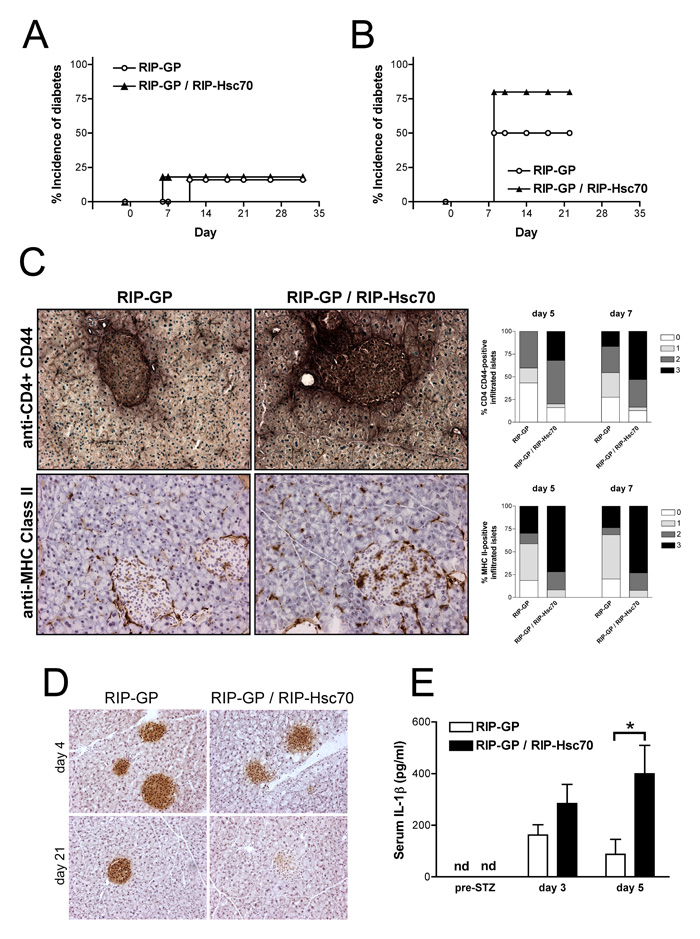Figure 4.
Increased incidence of diabetes and inflammation in RIP-GP / RIP-Hsc70 mice following STZ-induced necrotic β-cell damage. Incidence of diabetes in RIP-GP and RIP-GP / RIP-Hsc70 following administration of a single i.p. dose of (A) 125 mg/kg or (B) 150 mg/kg STZ on day 0. n=7-12 mice. p < 0.05 between RIP-GP and RIP-GP / RIP-Hsc70 incidence using 150mg/kg STZ. (C) Pancreatic tissue was frozen on days 5 and 7 following administration of 125 mg/kg STZ to RIP-GP and RIP-GP / RIP-Hsc70 mice. Sections were double or single stained for CD4-positive and CD44-positive cells (upper panels), and MHC class II-positive cells (lower panels). Representative sections from day 7 pancreas containing infiltrated islets are shown. Islets were scored as 0 = no cell staining; 1 = peri-islet staining only, 2 = intra-islet staining, 3 = extensive peri-islet and intra-islet staining, shown in the graphs to the right. A total of 30-60 islets from multiple sections of 4 treated mice of each strain on each day were examined. p<0.05 for CD4/CD44 and p=0.006 for MHC II scores between RIP-GP and RIP-GP / RIP-Hsc70 scoring 2 or 3 on both days. (D) Mice were given a single injection of 150 mg/kg STZ, and the pancreas analyzed 4 or 21 days later. Sections were stained for insulin-positive β-cells remaining in the islets. (E) Serum samples were obtained before and on days 3 and 5 following administration of 125 mg/kg STZ and levels of IL-1β were determined by ELISA. * indicates p<0.05 for n=2-4 mice. Experiments were performed at least 3 times with similar results.

